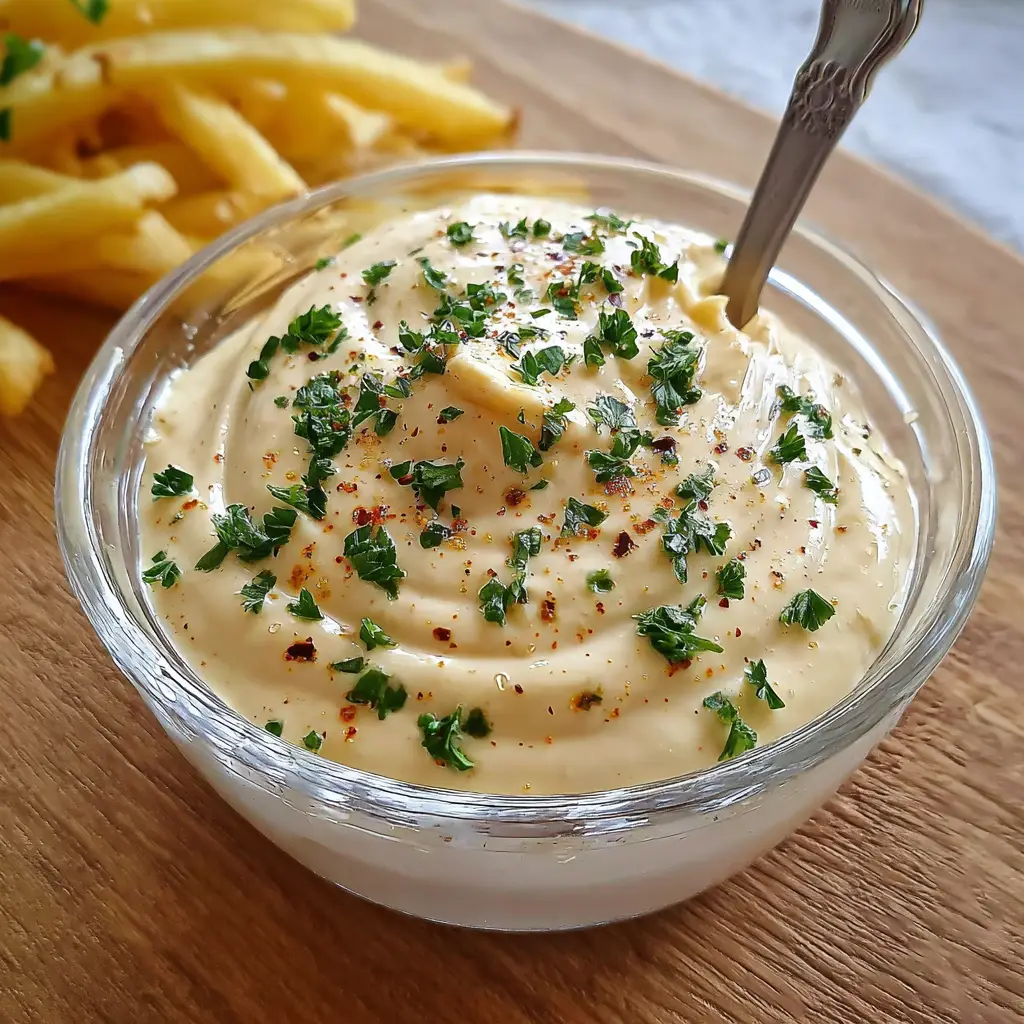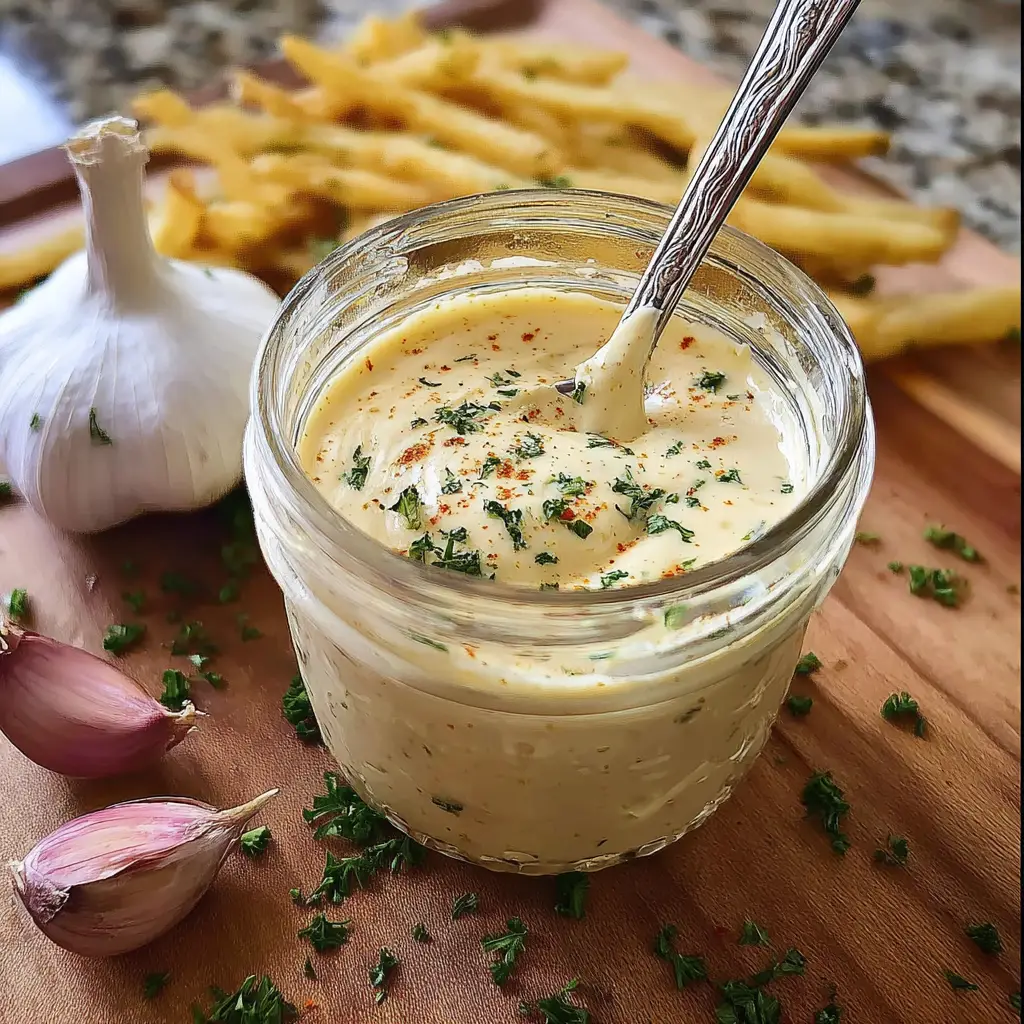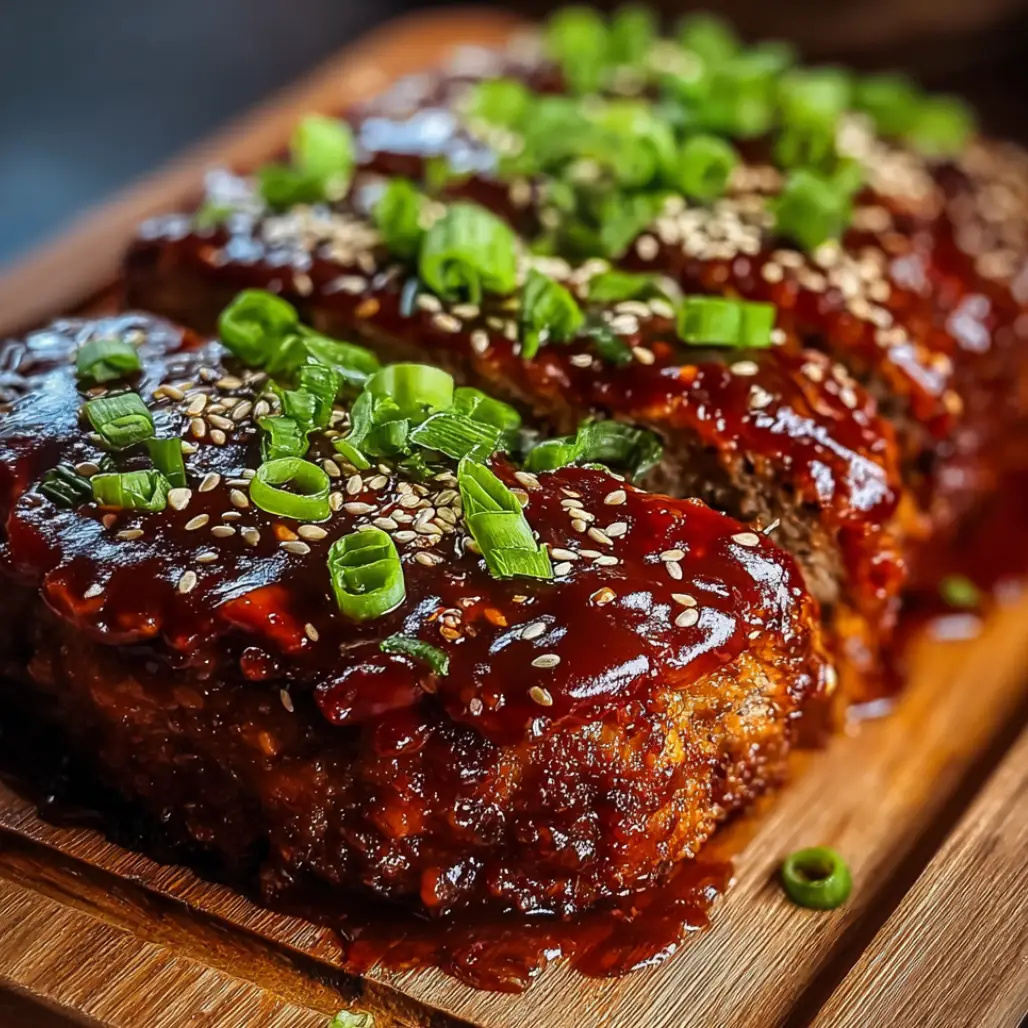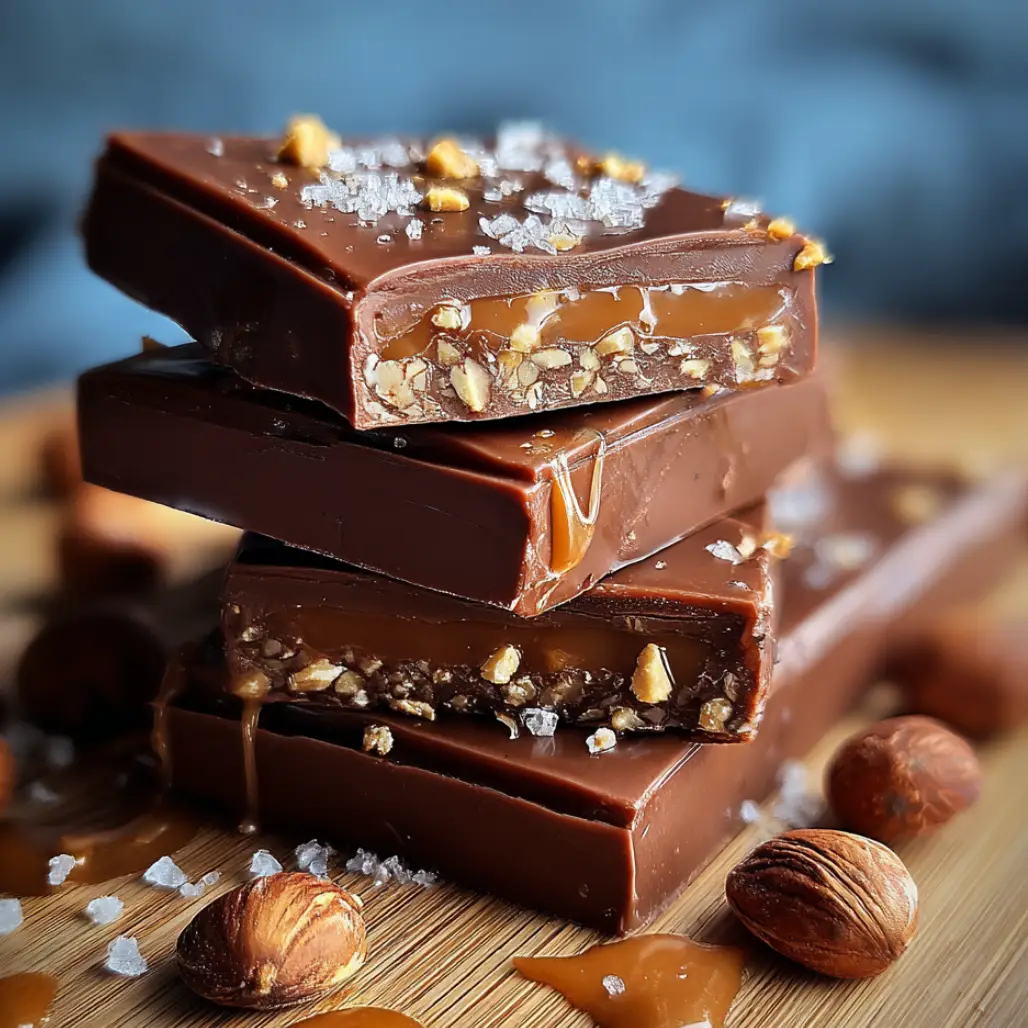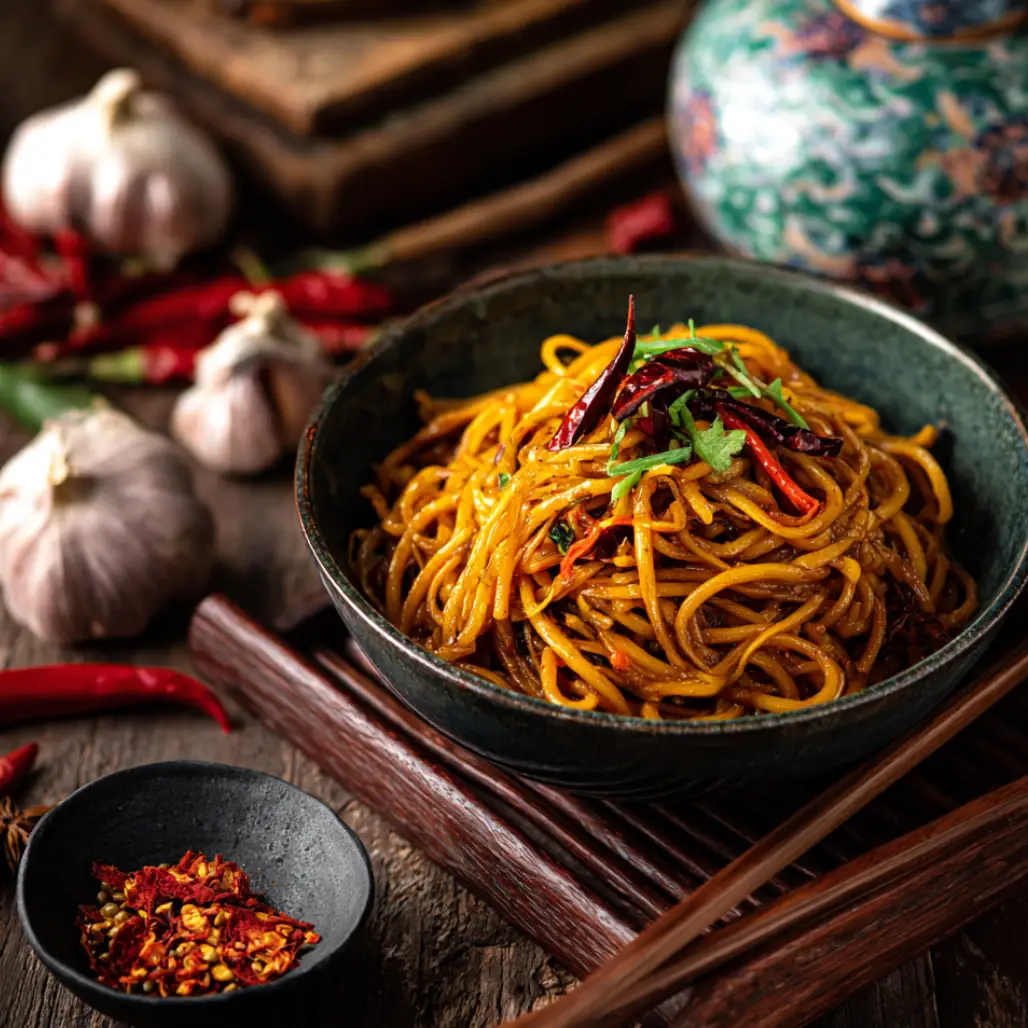| Prep Time | Cook Time | Total Time | Serves |
|---|---|---|---|
| 10 minutes | 45 minutes | 55 minutes | 8 |
This luxurious roasted garlic aioli sauce transforms ordinary meals into extraordinary culinary experiences, because it combines the sweet, caramelized essence of perfectly roasted garlic with creamy mayonnaise and bright citrus notes that create a sophisticated condiment worthy of the finest restaurants. When you master this roasted garlic aioli sauce recipe, you unlock the secret to elevating everything from simple french fries to gourmet seafood dishes, because the complex flavors developed through proper garlic roasting create depth and richness that cannot be achieved with raw garlic preparations.
The magic of roasted garlic aioli sauce lies in its ability to bridge the gap between casual comfort food and refined dining experiences, because the gentle sweetness of caramelized garlic mellows the sharp bite typically associated with garlic-based sauces while maintaining that beloved aromatic intensity. This versatile condiment represents the perfect example of how simple techniques can transform basic ingredients into something truly special, because the roasting process fundamentally changes the garlic’s character while the emulsification creates a silky texture that coats and enhances whatever it touches.
Why This Roasted Garlic Aioli Sauce Will Transform Your Cooking
The extraordinary appeal of roasted garlic aioli sauce extends far beyond its delicious flavor profile and creamy texture, because this condiment demonstrates the transformative power of proper technique and patience in creating restaurant-quality results that surpass any store-bought alternative. Professional chefs understand that the key to exceptional flavor development lies in understanding how heat affects ingredients over time, which is exactly what this roasted garlic aioli sauce accomplishes through the careful caramelization process that develops complex sweetness and nutty undertones.
What makes roasted garlic aioli sauce particularly special is its remarkable versatility and ability to complement both simple and sophisticated dishes without overwhelming their individual characteristics, because the balanced flavor profile enhances rather than masks the natural tastes of other ingredients. The preparation process itself becomes a lesson in patience and technique that teaches valuable cooking skills while filling your kitchen with the irresistible aroma of slowly caramelizing garlic that creates anticipation for the final result.
These exceptional qualities make roasted garlic aioli sauce an essential component in any serious cook’s repertoire, because it provides an instant upgrade to countless dishes while demonstrating your commitment to quality ingredients and proper preparation methods. The visual appeal of this golden, creamy sauce makes it perfect for entertaining and special occasions, because it looks as impressive as it tastes while requiring only basic ingredients and fundamental cooking techniques that anyone can master with practice.
Essential Ingredients for Perfect Roasted Garlic Aioli Sauce
For the Roasted Garlic:
- 2 large garlic bulbs (whole heads with papery skin intact)
- 2 tablespoons extra-virgin olive oil (for roasting and moisture)
- 1/2 teaspoon kosher salt (enhances caramelization process)
- 1/4 teaspoon black pepper (freshly ground for optimal flavor)
For the Aioli Base:
- 3/4 cup high-quality mayonnaise (preferably homemade or premium brand)
- 2 tablespoons fresh lemon juice (brightens and balances richness)
- 1 tablespoon lemon zest (adds aromatic oils and complexity)
- 1 teaspoon Dijon mustard (provides tang and emulsification help)
- 1/2 teaspoon Worcestershire sauce (adds umami depth)
- 1/4 teaspoon cayenne pepper (optional heat element)
- Salt and white pepper (for final seasoning adjustments)
The Art of Creating Perfect Roasted Garlic Aioli Sauce
Mastering the technique of roasted garlic aioli sauce requires understanding the fundamental principles of garlic caramelization and emulsification that create the signature texture and flavor profile that distinguishes this condiment from simple garlic mayonnaise, because proper roasting develops complex sugars and mellows harsh compounds while the emulsification process creates stable, creamy consistency. Professional chefs emphasize the importance of low, slow roasting to achieve optimal garlic transformation, because rushing this process results in burned rather than caramelized garlic that creates bitter flavors instead of the desired sweetness.
The foundation of exceptional roasted garlic aioli sauce begins with selecting firm, fresh garlic bulbs and understanding how different roasting methods affect the final flavor development, because oven roasting provides even heat distribution that promotes uniform caramelization throughout each clove. When preparing the garlic for roasting, proper cutting and oil application techniques ensure that moisture is retained while allowing heat penetration that transforms the starch content into natural sugars through the Maillard reaction.
Understanding the science behind proper emulsification elevates your roasted garlic aioli sauce from good to extraordinary, because the combination of roasted garlic, mayonnaise, and acidic ingredients must be balanced carefully to create stable emulsion that won’t separate or become grainy. The key lies in achieving the right temperature and consistency of all components before combining them, ensuring that the finished sauce maintains its smooth, luxurious texture throughout storage and service.
Step-by-Step Instructions for Roasted Garlic Aioli Sauce
Preparing the Garlic for Roasting
Begin your roasted garlic aioli sauce by preheating your oven to 400°F and preparing the garlic bulbs by removing loose outer papery layers while keeping the cloves intact within their natural structure. Use a sharp knife to slice approximately 1/2 inch off the top of each garlic bulb, exposing the individual cloves while maintaining the bulb’s structural integrity that allows for even roasting and easy extraction later.
Professional Tip: Leave enough papery skin around the bulbs to protect the cloves during roasting, because this natural wrapper prevents burning while allowing the garlic to steam gently in its own moisture for optimal roasted garlic aioli sauce results.
Key Points: The exposed clove tops should show clean cuts without crushing, and the bulbs should feel firm and heavy, indicating fresh garlic that will roast evenly and develop proper sweetness for your aioli.
Roasting the Garlic to Perfection
Place the prepared garlic bulbs cut-side up on a large piece of aluminum foil, then drizzle each bulb generously with olive oil, ensuring that the oil penetrates into the exposed cloves for even moisture distribution. Season with salt and pepper, then wrap the foil tightly around the garlic bulbs to create sealed packets that will steam and roast simultaneously.
Professional Tip: Create individual foil packets for each garlic bulb rather than wrapping them together, because this ensures even heat distribution and prevents one bulb from cooking faster than the other in your roasted garlic aioli sauce preparation.
Key Points: The foil should be sealed completely to prevent moisture loss, and the garlic should roast for 40-45 minutes until the cloves are golden brown, soft, and easily squeezed from their skins when gently pressed.
Extracting and Preparing Roasted Garlic
Remove the roasted garlic from the oven and allow it to cool for 10 minutes before carefully unwrapping the foil packets, because the steam will be extremely hot and can cause burns if handled too quickly. Once cooled, gently squeeze each clove from its skin into a small bowl, using the back of a fork to mash the soft, caramelized garlic into a smooth paste.
Professional Tip: Save any accumulated roasted garlic oil from the foil packets, because this intensely flavored oil can be incorporated into your roasted garlic aioli sauce for additional depth and richness that enhances the overall flavor profile.
Key Points: The roasted garlic should be completely soft and golden brown with a sweet, nutty aroma, and it should mash easily without any firm or crunchy pieces that would create texture issues in the finished aioli.
Creating the Aioli Emulsion
Combine the mashed roasted garlic with lemon juice, lemon zest, and Dijon mustard in a medium mixing bowl, whisking thoroughly to create a smooth base before adding the mayonnaise. Add the mayonnaise gradually while whisking continuously, then incorporate the Worcestershire sauce and cayenne pepper, adjusting seasonings to taste with salt and white pepper.
Professional Tip: Allow the completed roasted garlic aioli sauce to rest in the refrigerator for at least 30 minutes before serving, because this resting period allows the flavors to meld and develop while the sauce achieves its optimal consistency and taste balance.
Key Points: The finished aioli should be smooth, creamy, and light golden in color with no visible lumps or separation, and it should coat the back of a spoon while maintaining enough fluidity to drizzle or spread easily.
Final Seasoning and Storage
Taste the completed roasted garlic aioli sauce and adjust seasonings as needed, adding more lemon juice for brightness, salt for enhancement, or cayenne for heat according to your preferences and intended applications. Transfer the sauce to an airtight container and refrigerate until ready to serve, allowing the flavors to develop fully over time.
Professional Tip: Make this roasted garlic aioli sauce up to 3 days in advance for optimal flavor development, because the extended resting time allows all components to integrate fully while the roasted garlic flavors continue to mellow and deepen.
Key Points: The sauce should be stored in a clean, airtight container in the refrigerator and will maintain optimal quality for up to one week when properly stored and handled with clean utensils.
Professional Tips for Roasted Garlic Aioli Sauce Excellence
Temperature control throughout the roasting process determines the success of your roasted garlic aioli sauce, because proper heat management ensures complete caramelization without burning while developing the complex sweetness that distinguishes roasted garlic from raw preparations. Professional chefs recommend using an oven thermometer to verify accuracy, because consistent temperature prevents the bitter flavors that result from overheating while ensuring complete transformation of the garlic’s natural compounds.
Quality ingredient selection directly impacts the final flavor and texture of your roasted garlic aioli sauce, because premium mayonnaise, fresh lemons, and firm garlic bulbs create superior results compared to lower-quality alternatives that may contain stabilizers or artificial flavors. When selecting garlic, choose bulbs that feel heavy for their size with tight, papery skins and no soft spots, because fresh garlic roasts more evenly and develops better flavor than older specimens.
Proper storage and handling techniques preserve the quality and safety of your roasted garlic aioli sauce while maintaining optimal flavor and texture throughout its storage life, because this dairy-based condiment requires careful temperature control and clean handling to prevent spoilage. Always use clean utensils when serving and return unused portions to refrigeration promptly to maintain food safety standards while preserving the sauce’s quality characteristics.
Creative Variations for Your Roasted Garlic Aioli Sauce
Herb-infused variations transform roasted garlic aioli sauce into specialized condiments that complement specific dishes and seasonal ingredients while maintaining the fundamental character that makes the original so appealing. Consider adding fresh basil and parmesan for Italian-inspired applications, or incorporate fresh dill and capers for seafood pairings, because these additions create targeted flavor profiles without overwhelming the roasted garlic foundation.
Spice-enhanced versions allow you to customize the heat level and flavor complexity of your roasted garlic aioli sauce to match different cuisines and personal preferences while preserving the essential creamy texture and garlic sweetness. Try adding smoked paprika and chipotle powder for Southwestern flair, or incorporate harissa paste and preserved lemon for North African influences, because these modifications create unique variations while maintaining the sauce’s versatility.
International adaptations showcase the global appeal of roasted garlic aioli sauce by incorporating traditional flavor combinations from different culinary traditions that highlight the sauce’s adaptability to various cooking styles. Mediterranean versions with sun-dried tomatoes and oregano, Asian-inspired renditions with sesame oil and ginger, or French variations with tarragon and white wine vinegar demonstrate the endless possibilities for customization while honoring the fundamental preparation methods.
Perfect Pairing Ideas for Roasted Garlic Aioli Sauce
The rich, complex flavors of roasted garlic aioli sauce pair beautifully with crispy, fried foods that provide textural contrast while allowing the sauce’s creamy consistency to complement rather than compete with the main ingredients. Classic applications include french fries, onion rings, and fried seafood, while more sophisticated pairings with tempura vegetables or crispy artichokes showcase the sauce’s versatility across different dining contexts and perfect sides that enhance any meal.
Grilled and roasted proteins benefit tremendously from the addition of roasted garlic aioli sauce, because the caramelized garlic flavors complement the smoky, charred notes developed through high-heat cooking methods while adding moisture and richness that enhances the overall eating experience. Consider serving this sauce with grilled fish, roasted chicken, or barbecued vegetables, or explore creative applications with snacks and appetizers that showcase the sauce’s ability to elevate simple ingredients.
Fresh vegetable applications demonstrate the sauce’s ability to transform raw ingredients into satisfying, flavorful combinations that work equally well for casual snacking or elegant appetizer presentations. Crisp crudité vegetables, fresh salads, or roasted vegetable platters become more engaging and satisfying when accompanied by this luxurious sauce that adds richness without overwhelming delicate vegetable flavors.
Discover More Delicious Recipe Categories
Expand your condiment repertoire with flavored dips and marinades that share similar preparation techniques and flavor development principles, because mastering emulsification and flavor balancing opens up numerous possibilities for creating restaurant-quality sauces and accompaniments that elevate your entire cooking approach.
Complete your meal planning with savory sides that complement the rich flavors of roasted garlic aioli sauce while providing balanced nutrition and varied textures throughout your dining experience, because understanding how different components work together enhances your ability to create cohesive, satisfying meals that please diverse palates.
Explore refreshing contrasts with beverages that cleanse the palate between rich bites while enhancing rather than competing with the complex flavors in your roasted garlic aioli sauce applications, because proper beverage pairing can significantly enhance the overall dining experience and highlight the best aspects of both food and drink.
Storage Guidelines for Roasted Garlic Aioli Sauce
Proper storage techniques ensure that your roasted garlic aioli sauce maintains optimal flavor, texture, and safety throughout its refrigerated life, because this emulsified sauce requires specific conditions to prevent separation and bacterial growth while preserving the delicate balance of flavors that make it so appealing. Store the completed sauce in clean, airtight glass or plastic containers in the refrigerator at temperatures below 40°F, and consume within 5-7 days for best quality and safety.
Container selection and handling practices significantly impact the longevity and quality of stored roasted garlic aioli sauce, because proper materials and clean techniques prevent contamination while maintaining the sauce’s creamy consistency and fresh flavors. Use containers with tight-fitting lids that prevent air exposure, and always use clean utensils when serving to avoid introducing bacteria that could cause spoilage or separation of the emulsified ingredients.
Freezing considerations reveal that roasted garlic aioli sauce does not freeze well due to its emulsified nature, because the freezing process breaks down the mayonnaise base and creates grainy, separated textures that cannot be restored through stirring or reheating. Instead, focus on making smaller batches more frequently to ensure optimal freshness and quality while avoiding waste from spoiled or deteriorated sauce.
The Science Behind Perfect Roasted Garlic Aioli Sauce
Understanding the Maillard reaction explains why roasted garlic develops such complex, appealing flavors compared to raw garlic preparations, because this chemical process between amino acids and reducing sugars creates hundreds of new flavor compounds that provide depth, sweetness, and nutty characteristics impossible to achieve through other cooking methods. The controlled heat and time involved in proper roasting allow these reactions to proceed slowly and completely, developing the full spectrum of flavors that make roasted garlic aioli sauce so distinctive.
Emulsification science reveals why proper technique and ingredient ratios create stable, creamy textures that resist separation and maintain consistent quality throughout storage and service, because the combination of egg-based mayonnaise, acidic ingredients, and roasted garlic creates multiple stabilizing factors that support long-term emulsion stability. The lecithin in egg yolks acts as a natural emulsifier while the acid helps maintain proper pH levels that prevent bacterial growth and flavor degradation.
Temperature chemistry demonstrates why both roasting and storage temperatures critically affect the quality and safety of roasted garlic aioli sauce, because heat transforms garlic’s cellular structure while proper refrigeration maintains emulsion stability and prevents spoilage. Understanding these thermal dynamics helps you achieve consistent results while maintaining food safety standards that protect both quality and health throughout the sauce’s useful life.
Troubleshooting Common Roasted Garlic Aioli Sauce Issues
Separation problems typically result from temperature differences between ingredients or improper mixing techniques, because emulsified sauces require compatible temperatures and gradual incorporation to maintain stable, creamy consistency throughout the preparation process. Fix separated aioli by starting with fresh mayonnaise at room temperature and gradually whisking in the separated mixture one spoonful at a time until the emulsion reforms and achieves proper texture.
Bitter flavors indicate that the garlic was roasted at too high temperature or for too long, because excessive heat breaks down beneficial compounds while creating harsh, unpleasant tastes that cannot be corrected through additional ingredients or seasoning adjustments. Prevent this issue by maintaining proper roasting temperature and checking the garlic regularly during cooking to ensure even caramelization without burning or overcooking.
Bland or weak garlic flavor suggests insufficient roasting time or poor-quality garlic that lacks the natural compounds necessary for proper flavor development during the caramelization process. Address this problem by extending roasting time until the garlic becomes soft and golden, or by supplementing with small amounts of roasted garlic paste from specialty stores while adjusting other seasonings to maintain proper balance.
Additional Inspiration and Recipe Ideas
Transform your roasted garlic aioli sauce into specialized condiments by incorporating seasonal ingredients and regional flavor profiles that showcase the sauce’s adaptability while maintaining its essential character and appeal. Consider spring versions with fresh herbs and pea shoots, summer variations with roasted tomatoes and basil, or autumn adaptations with roasted squash and sage, because these seasonal modifications create timely variations that celebrate the best ingredients each season offers.
Explore breakfast applications by adapting roasted garlic aioli sauce concepts to morning meals and breakfast favorites that benefit from rich, savory accompaniments without overwhelming delicate morning palates. Consider lighter versions for egg dishes, herb-enhanced variations for breakfast sandwiches, or spicy adaptations for breakfast potatoes that add excitement to traditional morning fare.
Create dessert-inspired contrasts by serving roasted garlic aioli sauce alongside unexpected dessert recipes that benefit from savory elements, such as cheese courses or fruit and nut platters that bridge the gap between savory and sweet courses while showcasing the sauce’s versatility beyond traditional applications.
Conclusion
This remarkable roasted garlic aioli sauce represents the perfect synthesis of simple ingredients and sophisticated technique, creating a condiment that elevates countless dishes while demonstrating the transformative power of proper preparation and patience in developing complex flavors that rival any restaurant offering. The careful balance of sweet roasted garlic, creamy mayonnaise, and bright citrus creates an experience that satisfies both comfort food cravings and refined culinary appreciation.
Whether you’re enhancing casual family meals or preparing for elegant entertaining, roasted garlic aioli sauce provides the ideal combination of versatility and sophistication that makes every application feel special and thoughtfully prepared. The time invested in mastering this technique pays dividends through countless improved meals and the satisfaction of creating restaurant-quality results in your own kitchen.
The endless customization possibilities and reliable preparation methods ensure that this roasted garlic aioli sauce will become an essential component of your culinary repertoire, because it demonstrates how fundamental cooking skills and quality ingredients can create extraordinary results that enhance your cooking confidence while providing delicious accompaniments for any occasion or preference.

